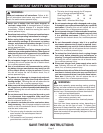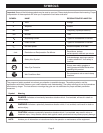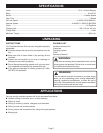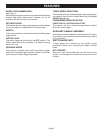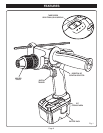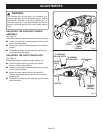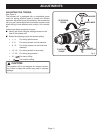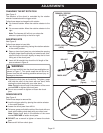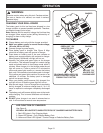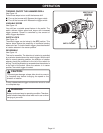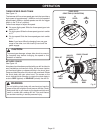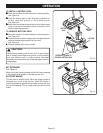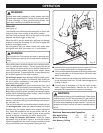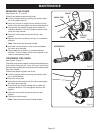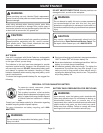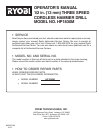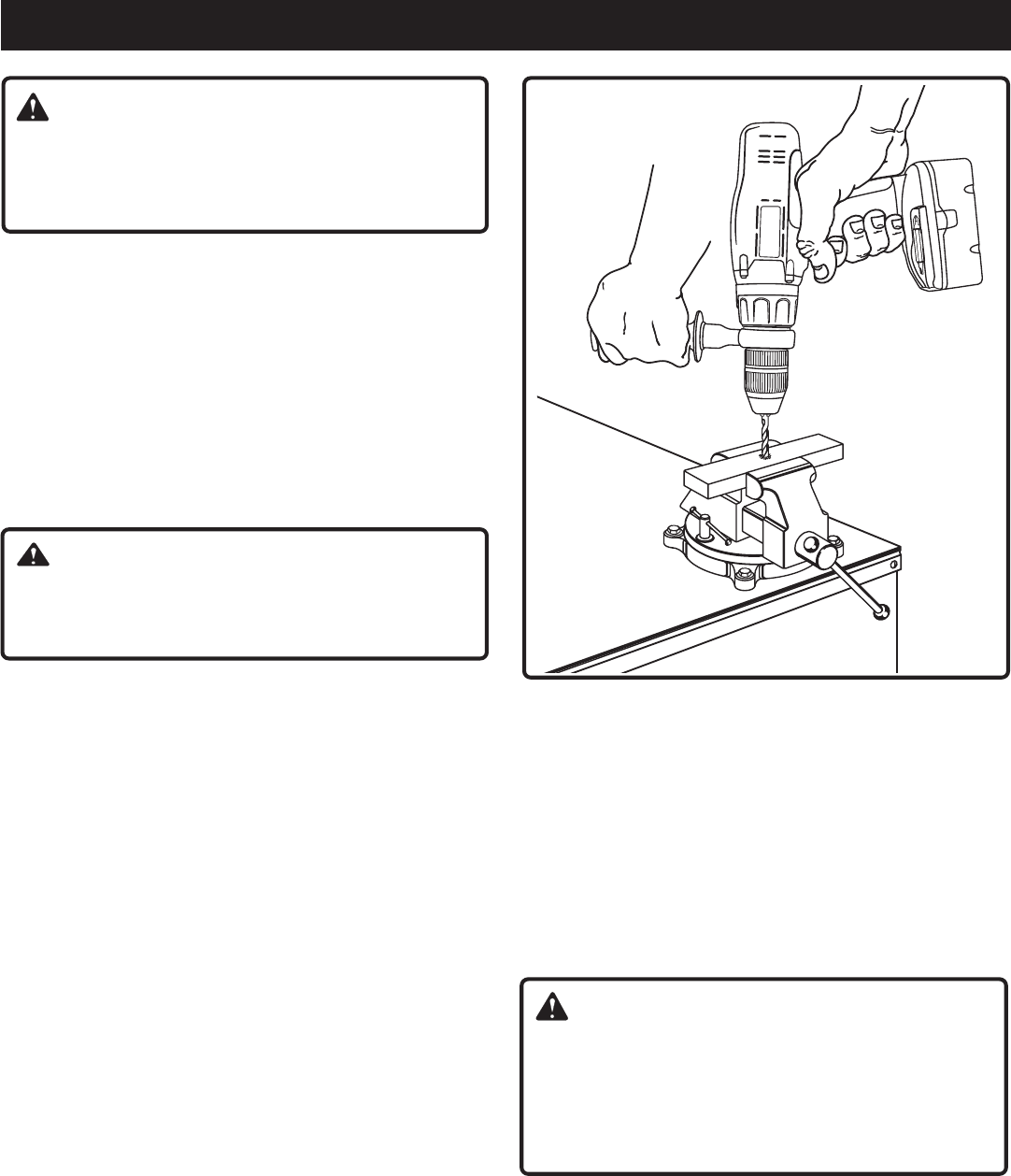
Page 17
OPERATION
WARNING:
Always wear safety goggles or safety glasses with side
shields when operating tool. Failure to do so could result
in dust, shavings, or loose particles being thrown into
your eyes, resulting in possible serious injury.
DRILLING
See Figure 15.
The material to be drilled should be secured in a vise or with
clamps to keep it from turning as the drill bit rotates.
Hold tool firmly and place the bit at the point to be drilled.
Depress the switch trigger to start tool.
Move the drill bit into the workpiece, applying only enough
pressure to keep the bit cutting. Do not force or apply side
pressure to elongate a hole.
We recommend that you select normal drill mode when
drilling with twist drills, hole saws, etc., in soft material.
WARNING:
Do not force tool. Forcing tool can result in jamming and
loss of balance or footing, which could result in personal
injury.
When drilling hard, smooth surfaces, use a center punch to
mark the desired hole location. This will prevent the drill bit
from slipping off center as the hole is started. However, the
lower speed feature allows starting holes without center
punching if desired. To accomplish this, simply operate your
drill at lower speed until the hole is started.
For drilling in wood, begin drilling at LO (1) speed, gradu-
ally increasing to full power. Occasionally clear chips from
the bit to prevent overheating. Low speed bits should be
used when drilling larger holes.
When drilling metals other than brass and cast iron, use a
light oil on the drill bit to keep it from overheating. The oil will
prolong the life of the bit and increase the drilling action.
Begin drilling at LO (1) speed, gradually increasing to higher
speeds. When drilling larger holes in steel, it may be helpful
to first drill a smaller pilot hole.
We recommend that you use carbide-tipped bits and select
hammer mode when drilling in hard materials such as brick,
tile, concrete, etc.
This tool is packed with two double-ended screwdriver bits.
For driving screws, select the desired speed and torque
settings using the speed selector and torque adjustment
ring. Insert the screwdriver bits as you would a drill bit, as
shown in figure 6. You may need to drive a few practice
screws in the type of material you will be working with.
For using the hammer drill feature, rotate the torque
adjustment ring, as shown in figure 4, so that the hammer
symbol is aligned with the arrow. Using the auxiliary handle
will provide better control and prevent forcing the tool.
■ Hold the drill at a right angle as shown in figure 16. Do not
force or apply side pressure to elongate the hole.
■ If the hammer speed decreases while drilling deep holes,
it may be necessary to lift up partially on the tool to clear
debris from the hole.
■ If there is excessive dust while using the hammer feature,
do not add water to the hole. This can cause clogging and
binding of the bit.
■ If the bit jams in workpiece or if the drill stalls, release
switch trigger immediately. Remove the bit from the
workpiece and determine the reason for jamming.
WARNING:
Be prepared for binding or bit breakthrough. When these
situations occur, the drill has a tendency to grab and kick
opposite to the direction of rotation, and could cause loss
of control when breaking through material. If you are not
prepared, this loss of control can result in possible serious
injury.
Maximum Recommended Capacities
Bits, Metal Drilling 1/2" 1/4" 1/4"
Wood, Flat Boring 1-1/2" 5/8" 5/8"
Bits, Masonry Drilling - 1/4" 1/4"
Fig. 15



